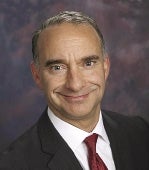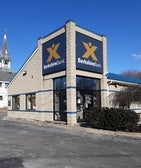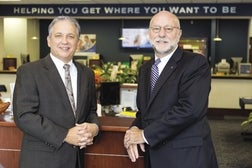Banks muscle in for a bigger piece of action in commercial lending
Many banks that do business in Central Massachusetts are jostling and hustling to underwrite new commercial loans, even going so far as to hire specialists from competitors to gain an advantage.
In January, Connecticut-based United Bank recruited six lenders from banks in the Springfield and Worcester markets in a bid to boost its commercial lending market share in the region, according to CEO Bill Crawford. This move underscores not only the importance banks are putting on this market, but highlights a continued competition among banks for qualified lenders.
That market for business loans in Central Massachusetts is growing, according to Tanya Duncan, director of management development for the Massachusetts Bankers Association, whose member banks throughout the state reporting a strong 2014, with more growth to come in 2015.
Commercial and industrial lending has been climbing nationally as well, up from a recent low of just under $1.19 trillion in October 2010 to $1.78 trillion in December, according to data from the Federal Reserve Bank of St. Louis. The last time commercial lending was this brisk was October 2008, when $1.59 trillion in loans was underwritten, before lending plummeted during the Great Recession.
Dan Barnard, the relationship manager in commercial lending for TD Bank in the MetroWest region, has seen a resurgence in commercial lending throughout MetroWest and into Worcester County in the last six months. There's an urgency now when businesses come to the bank for a loan, he said, as they're looking to grow.
“I think there is a real optimism for 2015,” he said. “We've seen strong activity. It remains strong and with the uptick of business owners looking to move forward I think it provides that much more opportunity.”
Commercial loan needs are tied directly to the economy, Barnard said. If the businesses are doing well, they'll seek capital to grow.
The value of building relationships
It's times like these when long-standing relationships with companies matter, said Brian Thompson, president and CEO of Commerce Bank, based in Worcester. Commerce has long stressed commercial lending and built connections with local businesses. It has grown its lending portfolio by $150 million in the last year, mostly through commercial lending, according to Thompson.
“It's much more personal and if you have a good strong lending team that gives you a real advantage,” said Thompson, who explained that while smaller community banks may not have the larger financial teams, many “have done a really good job of being 'Main Street lenders.'”
Crawford said it's not enough for businesses and banks to have single points of contacts in the organizations; there should be multiple long-term relationships.
“We really want to know the individuals that are making the decisions,” he said. “We want to know their business inside out and backwards.”
These relationships not only help with the loan process, with the evaluation of businesses being much more individualized and less prescribed than that of a mortgage, but also with gaining or keeping a foothold in the competitive commercial market, Thompson said.
One way in which banks have broken into the Worcester market is through recruitment.
In January, United Bank targeted a three-person team in Worcester working for Santander Bank to get the ties that team had with the community and expand United's stake in the Central Massachusetts commercial lending market, Crawford said.
“Our strategy all along has been to recruit … great commercial lenders and their teams … when we get the bankers over time we get the customers,” he said, explaining that the long-standing community relationships these bankers bring with them are critically important.
Good time to grab new business?
Crawford sees the New England economy as improving but not yet in “growth mode,” prompting the bank to aim to take business from established players.
“It's all about taking market share,” Crawford said. “When you look at New England, there is not a lot of economic growth. So you have to take market share, which is what we do very well.”
This recruitment highlights a lack of skilled commercial lenders in New England, both Crawford and Thompson said. Duncan, meanwhile, added that demand has been up 30 percent for the MBA's weeklong commercial lending course that runs every October. The course is designed for those with at least a year of commercial lending experience to build their skills at connecting with and evaluating businesses.
“There's a demand for experienced, trained commercial lenders and they are also developing existing staff through training programs,” she said.
With this focus on Central Massachusetts for commercial lending and a lack of long-time lenders, Thompson remains optimistic for commercial lending in the region, but questions whether there will be enough business to go around.
“I think a lot of banks are looking to expand their commercial lending — particularly the smaller banks. The bigger banks have always been doing it, but the smaller banks are looking for alternatives to residential lending,” Thompson said. “I think there's a spot for everybody, it's just that time will tell if there's enough food on the table.”
















0 Comments